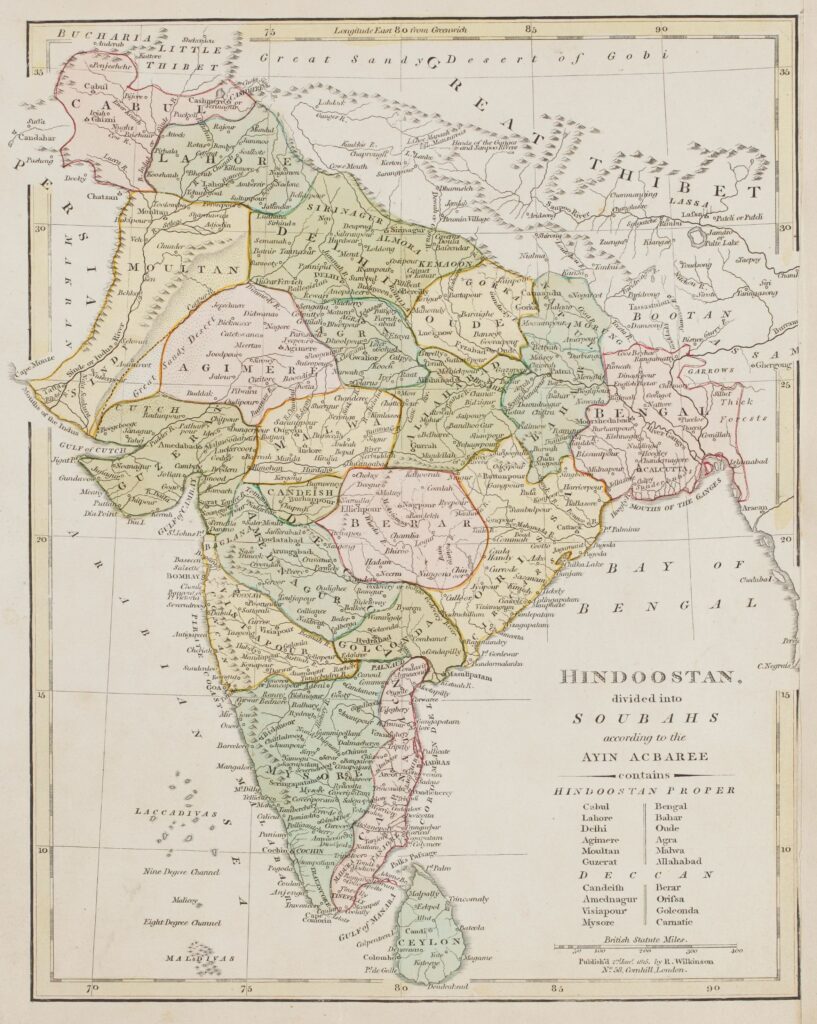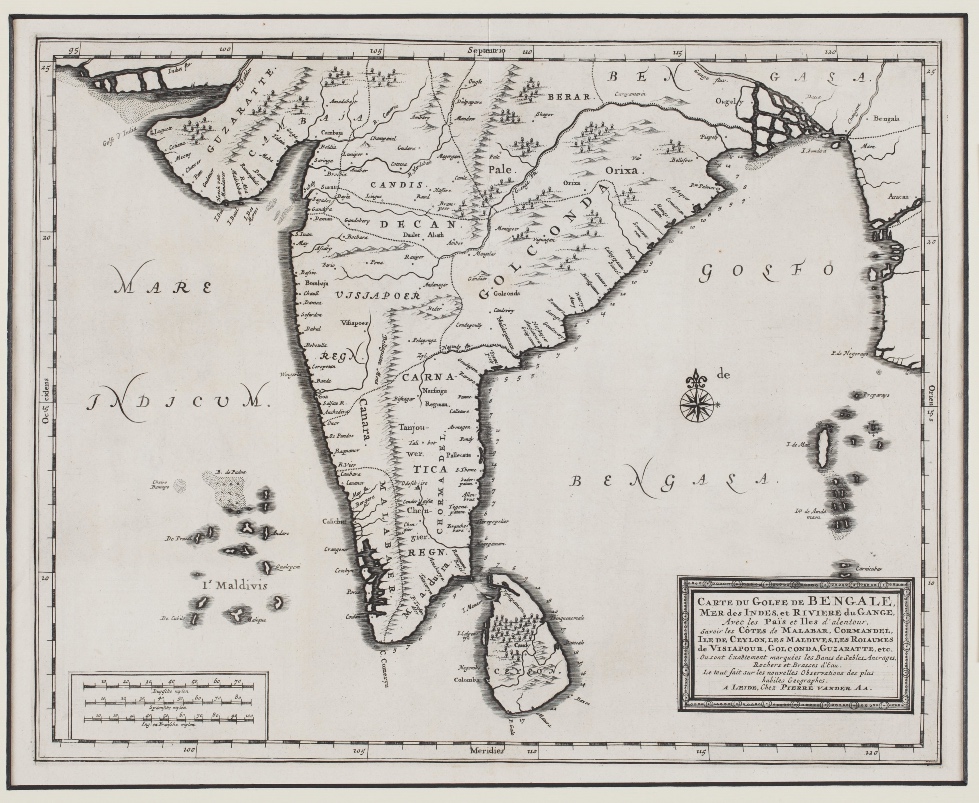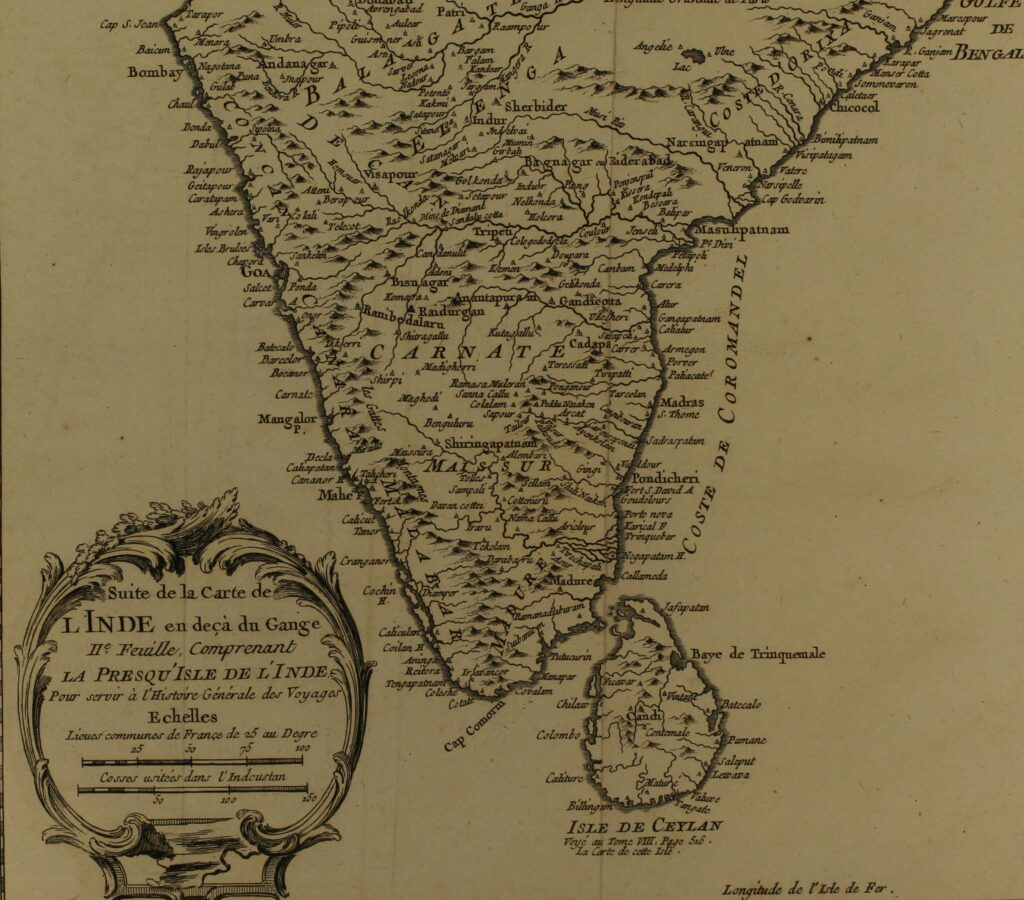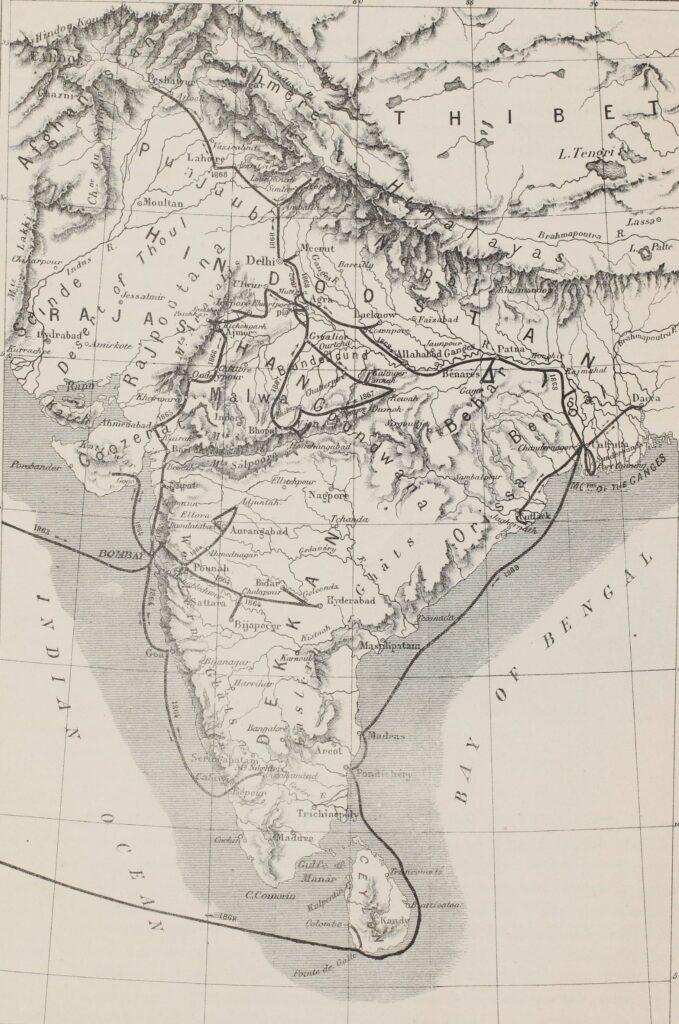
Deccan, 1590. As described in Mughal Emperor Akbar’s biography, the Ain-e-Akbari, image © Sarmaya Arts Foundation
The word Deccan is a shape-shifter. It could refer to a geographical formation—the plateau. A clutch of medieval empires—the Sultanate. Or simply a cardinal direction. ‘Deccan’ is the anglicised version of the Prakrit ‘dakkhina’, derived from the Sanskrit ‘dakshina’ for ‘south’. This is what gives the word its expansive quality. Whether we’re talking about its geology, politics or culture, the Deccan offers a sumptuous and varied feast for thought.
According to architectural historian Pushkar Sohoni, the Deccan had an identity distinct from ‘Hindustan’ or northern India for most of history. Empires of the region were able to forge connections to the rest of the world via maritime trade from the Coromandel, Konkan and Malabar coasts, allowing for the continuous movement of people and ideas. The Deccan has been enriched by the architectural, martial, culinary and artistic traditions that travelled here from West Asia and East Africa.

Deccan, 1720. ‘Carte Du Golfe De Bengale’, image ©️Sarmaya Arts Foundation
We see this expansiveness reflected in different aspects of the region. Language is one of them. Dakhani developed under the reign of the Delhi, Bahmani and Deccan sultanates and drew from the vocabularies of Persian, Dehlavi, Marathi, Telugu and Kannada. While it survives as an oral tradition today, it was once the medium in which Sufi paeans, love poems and court literature flourished.

Deccan, 1758. ‘Suite de la carte de l’Inde en deçà du Gange IIe Feuille, comprenant la Presqu’isle de l’Inde Pour servir à l’Histoire Générale des Voyages’ (South India and Ceylon), image © Sarmaya Arts Foundation
Architecture is another realm in which the Deccan showcases a happy mingling of influences. Rulers of vassal states would ruthlessly overthrow their lieges, but continue to build to the latter’s blueprints. (See Hoysaleshwara Temple, Halebidu.) Monarchs would signal their worldly sophistication by incorporating exotic foreign motifs and techniques in the building of prestige projects. (See pineapples on the Charminar.)
But you don’t have to travel to the caves of Ellora or mausoleums of Bidar to see what we mean. Just order a plate of idlis anywhere in the country and you’ll meet the poster child of Deccani multiculturalism: sambhar. Concocted in the kitchens of Maratha king Shahuji I of Thanjavur, the spicy-sour veggie-lentil uber-curry is a Tamilified version of the Maharashtrian amti and named for its inventor, the royal chef Sambhoji—read more about this and other legacies of the Thanjavur Marathas.

Deccan, 1876. Map from the rare book ‘India and its Native Princes. Travels in Central India and in the Presidencies of Bombay and Bengal’, image © Sarmaya Arts Foundation
Biryani is the other pan-Indian favourite that’s travelled all over the region, acquiring distinctive flavours from everywhere—Hyderabad to Arcot, and Mangalore to Kozhikode. Like all things classically Deccan, it shows us how disparate flavours can simmer together to create traditions that are original and timeless.



